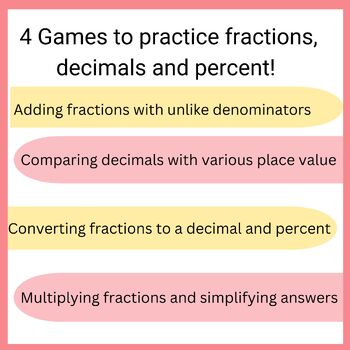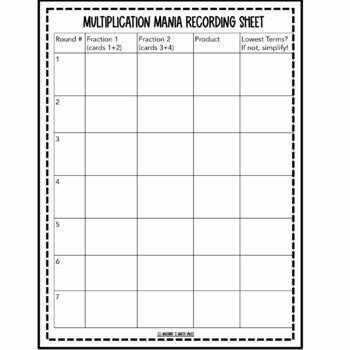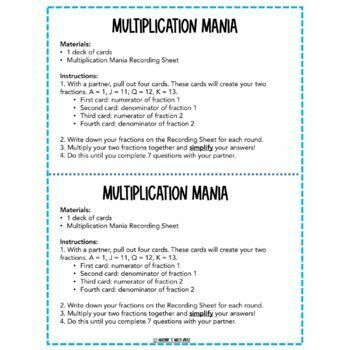STEAM Vault
45 Followers
Resource Type
Standards
CCSS5.NBT.A.3
CCSS5.NBT.A.3b
CCSS4.NF.A.2
CCSS4.NF.B.3a
CCSS5.NF.A.1
Formats Included
- PDF
STEAM Vault
45 Followers
Description
Looking to improve number sense in your math? Try these card games! Students will practice number sense concepts such as adding fractions, multiplying fractions, comparing decimals, and converting from fraction to decimal to percent! Great for minds on, math centres or even as formative assessment to meet students' needs.
- Adding Fractions - pairs of students use cards to create fractions, then add them together and simplify answers
- Decimal Doozy - pairs of students create decimals of different place value using cards and dice, then compare which number is larger
- Conversion Crazy - students generate a fraction using cards, then must convert it to a decimal and fraction
- Multiplication Mania - pairs of students generate fractions, then multiply and simplify answers
In this resource:
- Half-page instructions sheets for 4 Number Sense games
- Full page recording sheets for each Number Sense game
Want more number sense resources? Check out these resources:
- Middle School Bulletin Board Calendar
- Calculating Percent in the Stock Market
- Multiplying Fractions Digital Puzzle (Google Sheets)
Let me know your thoughts with a review! You'll receive for TPT credits! If you've got questions or need something fixed, just send me an email at marwassteamvault@gmail.com.
Total Pages
Answer Key
N/A
Teaching Duration
30 minutes
Report this resource to TPT
Reported resources will be reviewed by our team. Report this resource to let us know if this resource violates TPT’s content guidelines.
Standards
to see state-specific standards (only available in the US).
CCSS5.NBT.A.3
Read, write, and compare decimals to thousandths.
CCSS5.NBT.A.3b
Compare two decimals to thousandths based on meanings of the digits in each place, using >, =, and < symbols to record the results of comparisons.
CCSS4.NF.A.2
Compare two fractions with different numerators and different denominators, e.g., by creating common denominators or numerators, or by comparing to a benchmark fraction such as 1/2. Recognize that comparisons are valid only when the two fractions refer to the same whole. Record the results of comparisons with symbols >, =, or <, and justify the conclusions, e.g., by using a visual fraction model.
CCSS4.NF.B.3a
Understand addition and subtraction of fractions as joining and separating parts referring to the same whole.
CCSS5.NF.A.1
Add and subtract fractions with unlike denominators (including mixed numbers) by replacing given fractions with equivalent fractions in such a way as to produce an equivalent sum or difference of fractions with like denominators. For example, 2/3 + 5/4 = 8/12 + 15/12 = 23/12. (In general, 𝘢/𝘣 + 𝘤/𝘥 = (𝘢𝘥 + 𝘣𝘤)/𝘣𝘥.)





